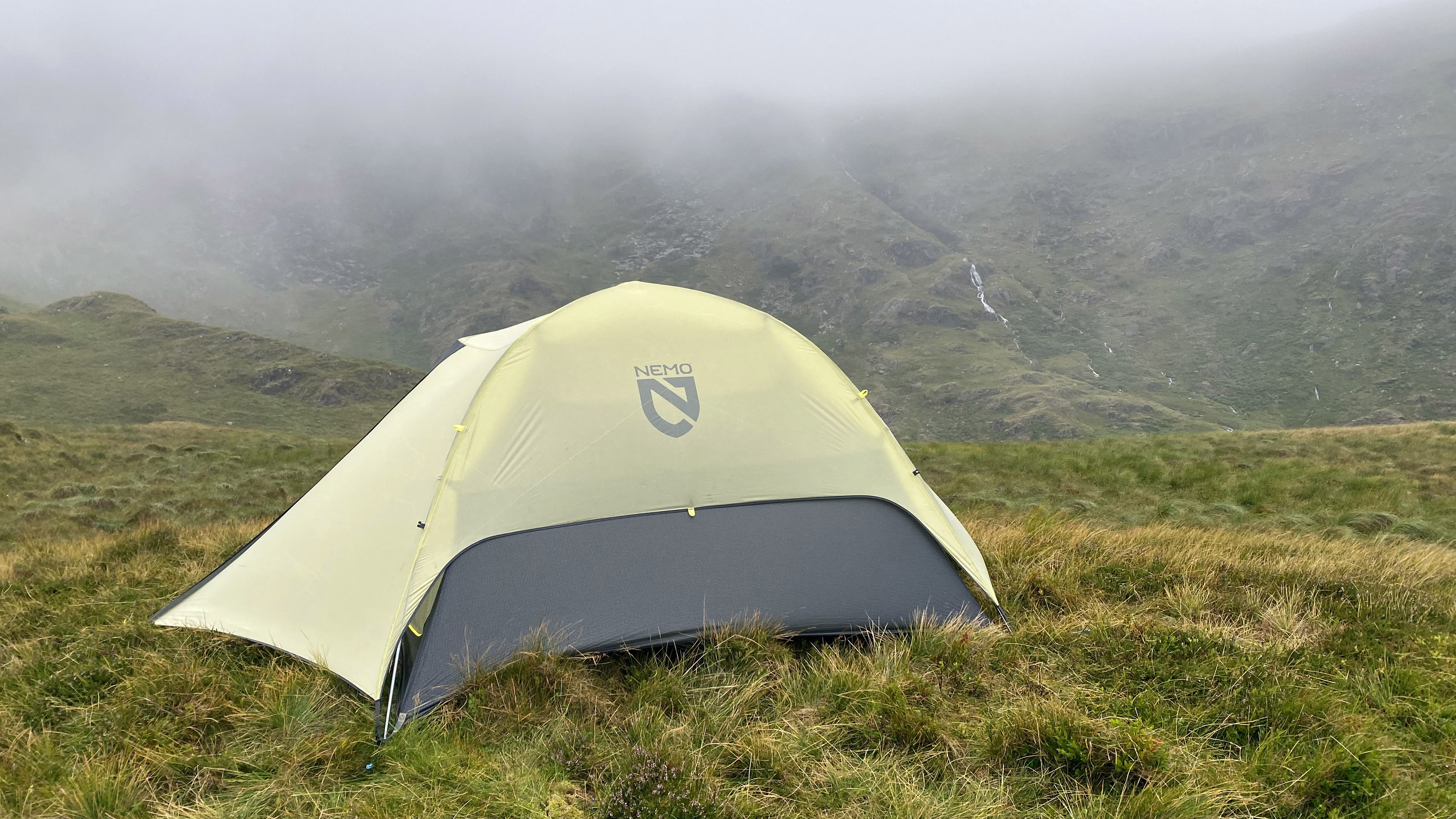Advnture Verdict
An excellent warm season backpacking tent, boasting premium components, cutting-edge fabrics and useful features. Pitching is quick and easy, it stands up to harsh conditions and is a pleasure to live in. Weighing just 1.49kg, it works whether solo camping or bringing along a couple of mates and packs down into a tidy, small, trail-ready package.
Pros
- +
Cutting edge, sustainable fabrics
- +
Gloriously lightweight
- +
Quality components
- +
Smart aesthetics
- +
Good headroom
- +
Plenty of vestibule space
Cons
- -
A little light for winter
- -
On the pricier side
- -
Cozy for three
You can trust Advnture
Nemo Hornet Osmo Ultralight Backpacking Tent: first impressions
Earlier in 2023, the camping equipment experts at Nemo unveiled their new, patent-pending Osmo fabrics, championing them as a leap forward both in terms of sustainability and performance in the world of lightweight camping. We’ve always been a fan of their Hornet and Dragonfly shelters, rating them as among the best camping tents around. In the last year, both have been given the Osmo makeover and we were stoked to head on out into the Lake District National Park with the three-person version of the Hornet.
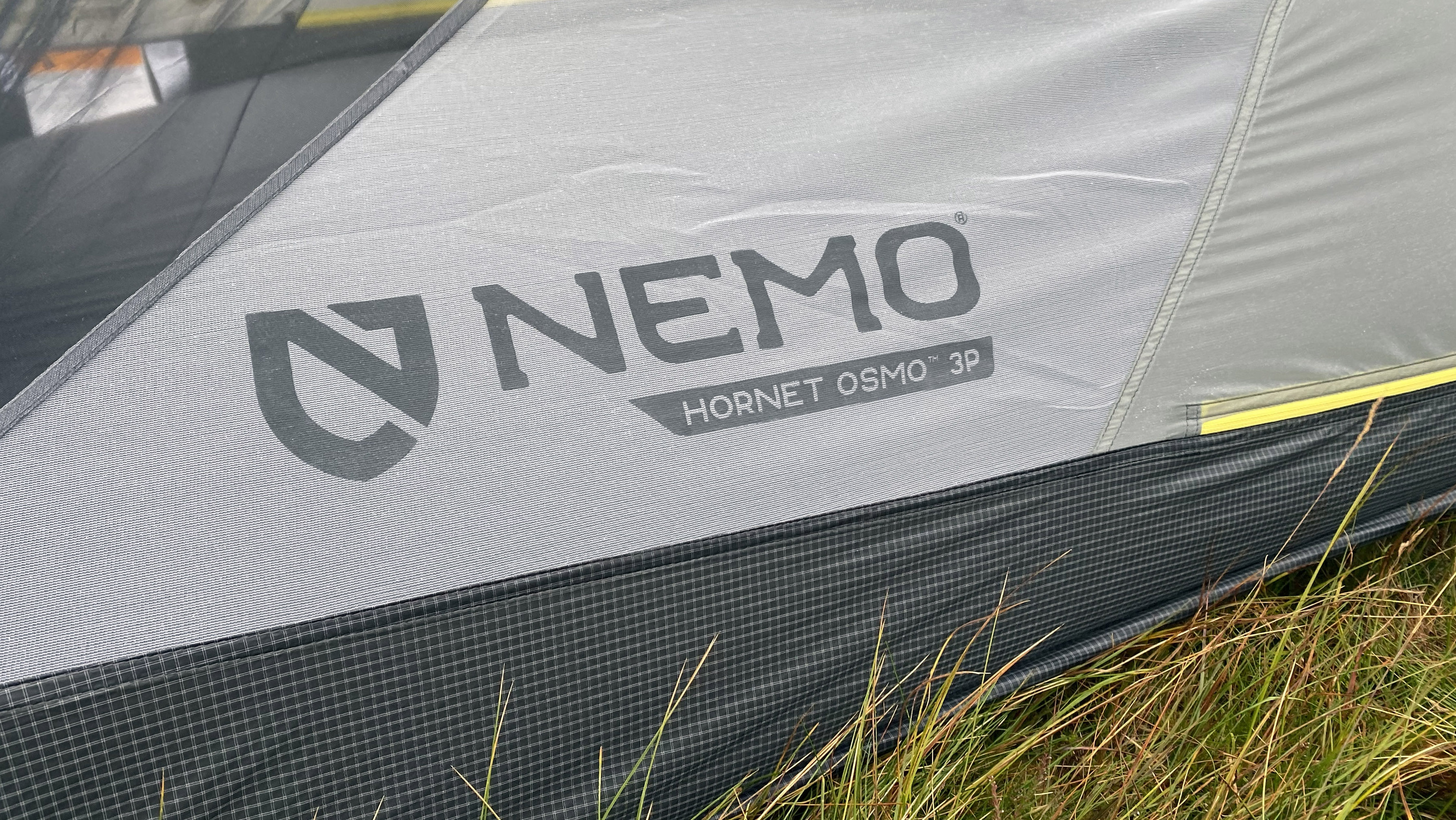
To give it the full title, the Nemo Hornet Osmo Ultralight Backpacking Tent is a semi-freestanding shelter that gives warm-season backpackers and car campers a spacious yet ultralight living space. It can be pitched as inner-only on warm, starry nights or with its protective rainfly up when the conditions close in. During my test period, it was predominantly the latter that was needed, with plenty of drizzle, periods of prolonged rain and windy nights to contend with – perfect for putting the Hornet through the wringer.
List price: $549.95 (US) / £549.99 (UK)
Sleeps: 3
Weight: 1.49kg (3lb 5oz)
Materials: 100% recycled, high-performance OSMO poly-nylon ripstop fabric, DAC Featherlite NSL poles
Packed size: 45 x 20 x 9 cm / 17.5 x 8.0 x 3.5 in
Maximum height inside: 1.11 m (44 in)
Waterproofing: Osmo Ripstop 1200 mm rainfly, Osmo Ripstop 1500 mm floor
Colors: Birch Bud/Goodnight Grey
Compatibility: Wild camping and car camping in the warmer months
Occasionally, a product just oozes high-end quality, surprising you with the little design touches and the very feel of its fabrics. The Hornet Osmo is definitely in this camp. This impression might have been influence by the fact the last tent I’d tested before getting to grips with the Hornet featured bog-standard tent pegs, poles and fabrics, but every element of this superb shelter felt modern, cutting edge; its design felt fresh and exciting.
I felt it had a similar vibe to the Sea to Summit Alto TR2, which is one of our favourite backpacking tents at Advnture. Both are semi-freestanding backpacking shelters, with modern components, comparable weight and a similar price point. It’s difficult to say which has the edge, while the Alto TR2 can point to its innovative Tension Ridge architecture, which creates a wider ceiling, the Hornet range boast Osmo fabrics, which really are something a bit special…
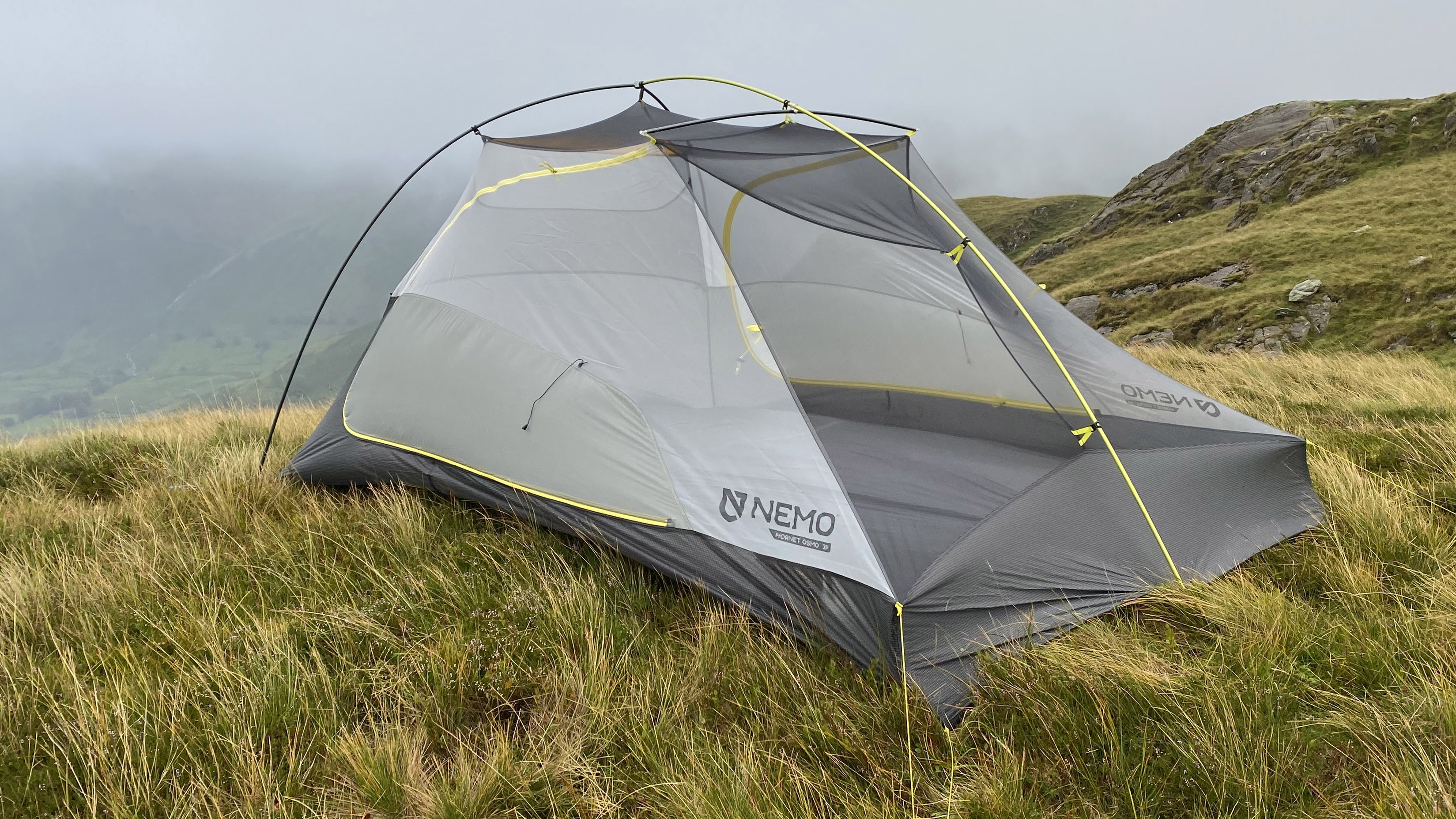
So, let’s dive into the performance of the Osmo fabrics used in the rainfly and groundsheet. Long in the making, Nemo took a no-compromise approach and tested over 100 development samples against a range of performance specifications to arrive at the innovative fabric used here. Created from a unique composite weave of low-denier nylon and polyester yarns, the result is an ultralight, incredibly hydrophobic and hard-wearing fabric.
Nemo asserts that, when compared to standard tent fabrics, the polyester yarns provide four times water repellency, while the nylon yarns give it 20% increased tear strength and three times less stretch. Its water repelling qualities also mean it suffers less from wet stretch. This leads to a taut flysheet fabric that doesn’t develop pools of water that diminish its performance, nor does it transfer moisture to the inner.

However, in this day and age, sustainability is more important than performance. Osmo fabrics are woven from 100% recycled yarns and are PFAS-free. Using recycled yarns aids the prevention of plastic pollution, keeps fossil fuels in the ground and reduces greenhouse gas emissions. Only some of the yarns are dyed, reducing the amount of dyestuff in the manufacturing process. As well as this, Osmo meets the industry requirements for flame retardancy without any additional chemicals being used in the manufacturing process.
Osmo is also designed to perform for longer, which means more years without the user having to reinvest in a new tent. Thanks to a combination of hydrophobic coatings, hydrophobic yarns and weave construction, the fabric’s water repellent performance lasted four times as long as standard tent fabrics after repeated washing in laboratory tests.
Nemo Hornet Osmo Ultralight Backpacking Tent: in the field
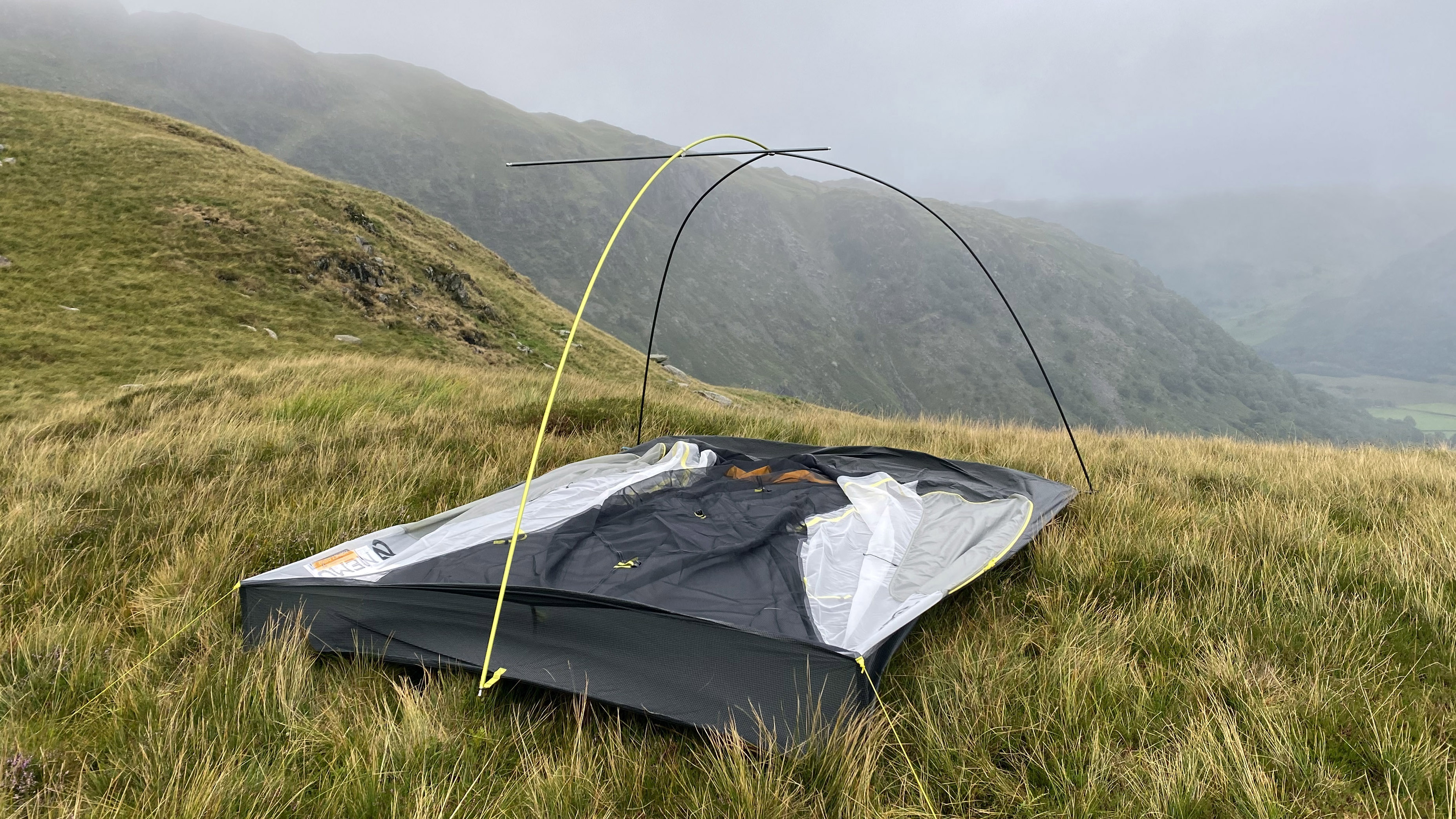
The Hornet uses a hubbed pole design similar to other semi-freestanding and freestanding backpacking tents. Its DAC poles are featherlight and magnetic connections mean they clip together easily and intuitively. Once assembled, they click into slots around the floor of the inner tent, which then attaches to the poles with clip on hooks. Easy peasy, lemon squeezy.
The one- and two-person versions feature a patent-pending flybar at the top of the structure, which creates a more spacious inner, while the three-person shelter features a long pole in parallel to the length of the tent. Clips on either end widen the overall living space. I think of it as being a bit like the Hornet’s wings.
The waterproof outer is just as easy to pitch, clipping into the overall structure at various points. Triangular guylines create the necessary tension, holding the walls of the ground sheet up, which protects items inside the tent from condensation and creates a large living space.
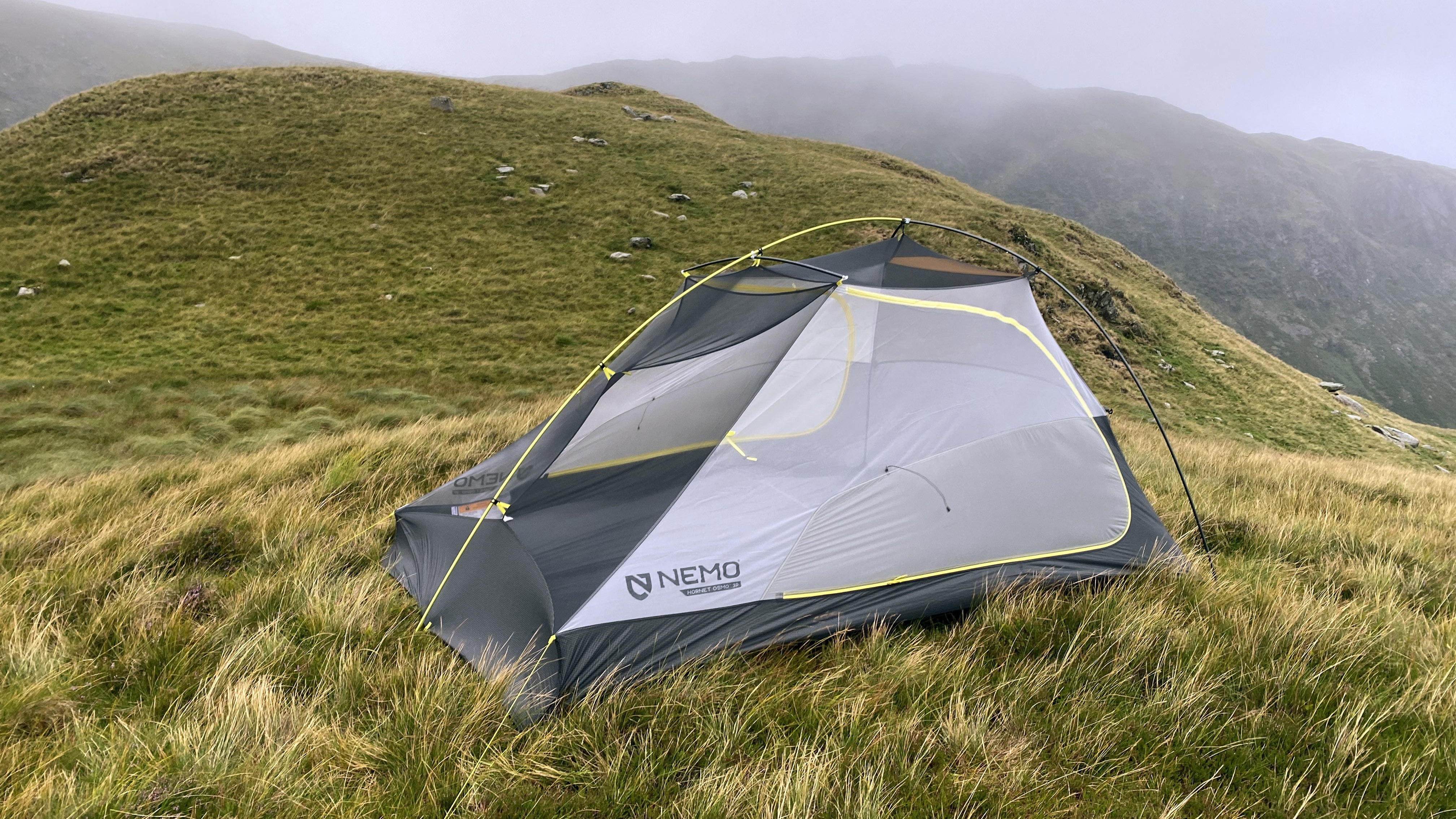
To really see how the Hornet stood up to challenging conditions, I ventured into the fells of the English Lake District for a few nights spent under the kind of heavy grey skies that seemed to revel in emptying themselves to add to the volume of said lakes. With streams in spate, rain lashing down in bursts and wet terrain, it was as good a test as I could have hoped for.
The first time I set the Hornet free from its Divvy Bag stuff sack, I was faced with gusty drizzle, high up in the mountains in the east of the national park. While this isn’t the ideal scenario for putting up a tent for the first time, it’s a good test of how easily it all slots together.
One drawback of an ultralight tent is that it’s even more susceptible flapping about uncontrollably when pitching. Nevertheless, the pole hub’s intuitive setup, with its useful color coding, meant I was able to get the inner sorted in minutes. I’m slightly colorblind too, so if I can do it that quickly, anyone can. The components convey a sense of premium quality. Everything feels so thin and light, from the Osmo fabrics to the stakes, pole system and volumizing flybar.
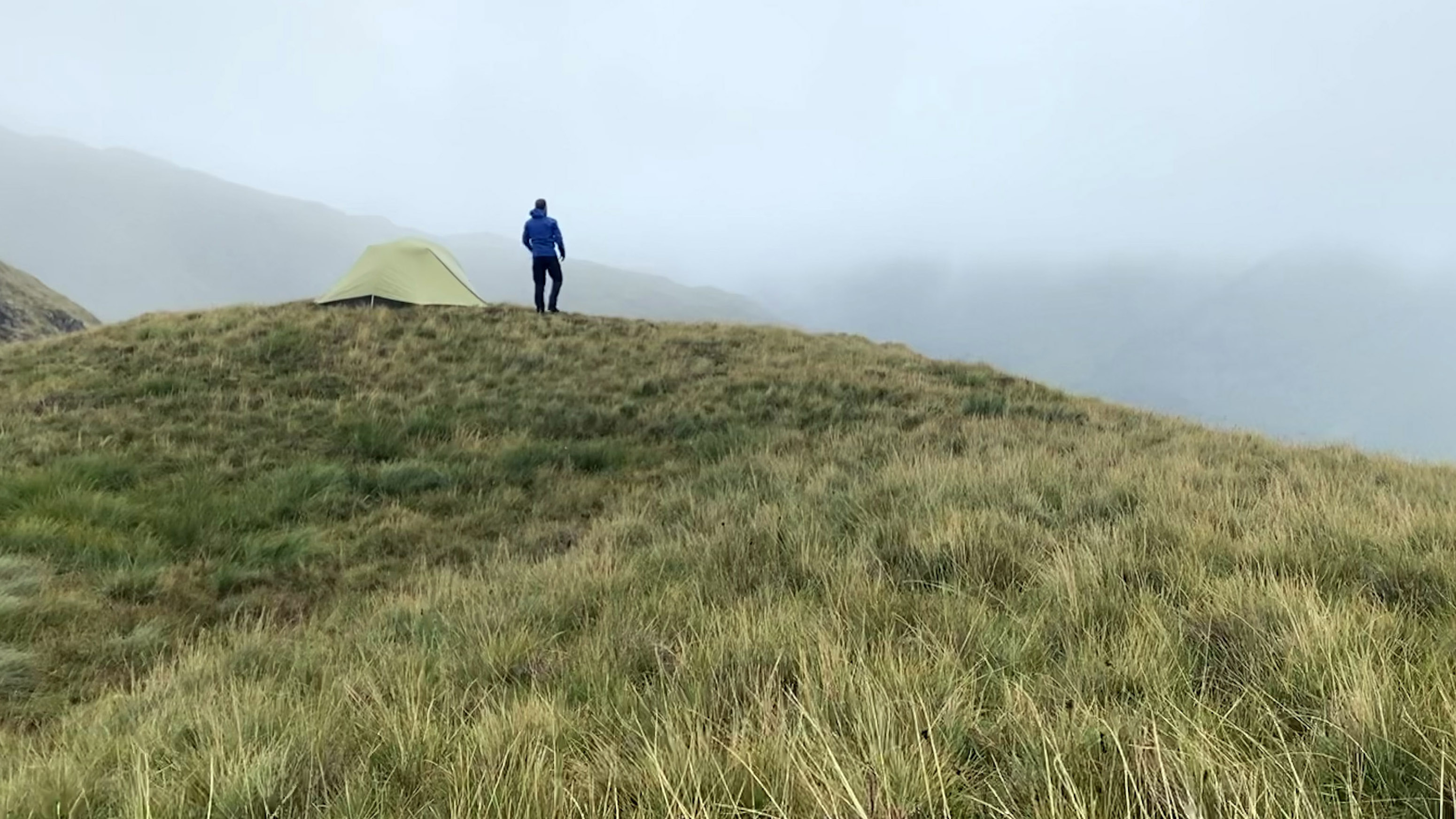
The outer is just as easy to add over the top, once I’d won the battle for control with the gusts, that is. Once it was clipped into the parallel pole and into the feet of the inner, guylines tensioned and pegged in, my castle of canvas was ready. Ready for a dripping wet Cumbrian (that’s me) to get in, shed my soggy layers and get warm, dry and content.
As the inner – with its mesh celling – is pitched first, it’s obviously going to get a little damp if you’ve no choice but to pitch in a downpour, which was the case on a couple of occasions here. However, the ease and speed of setup means that, unless it’s truly biblical, the tent should be up before it becomes too much of an issue.
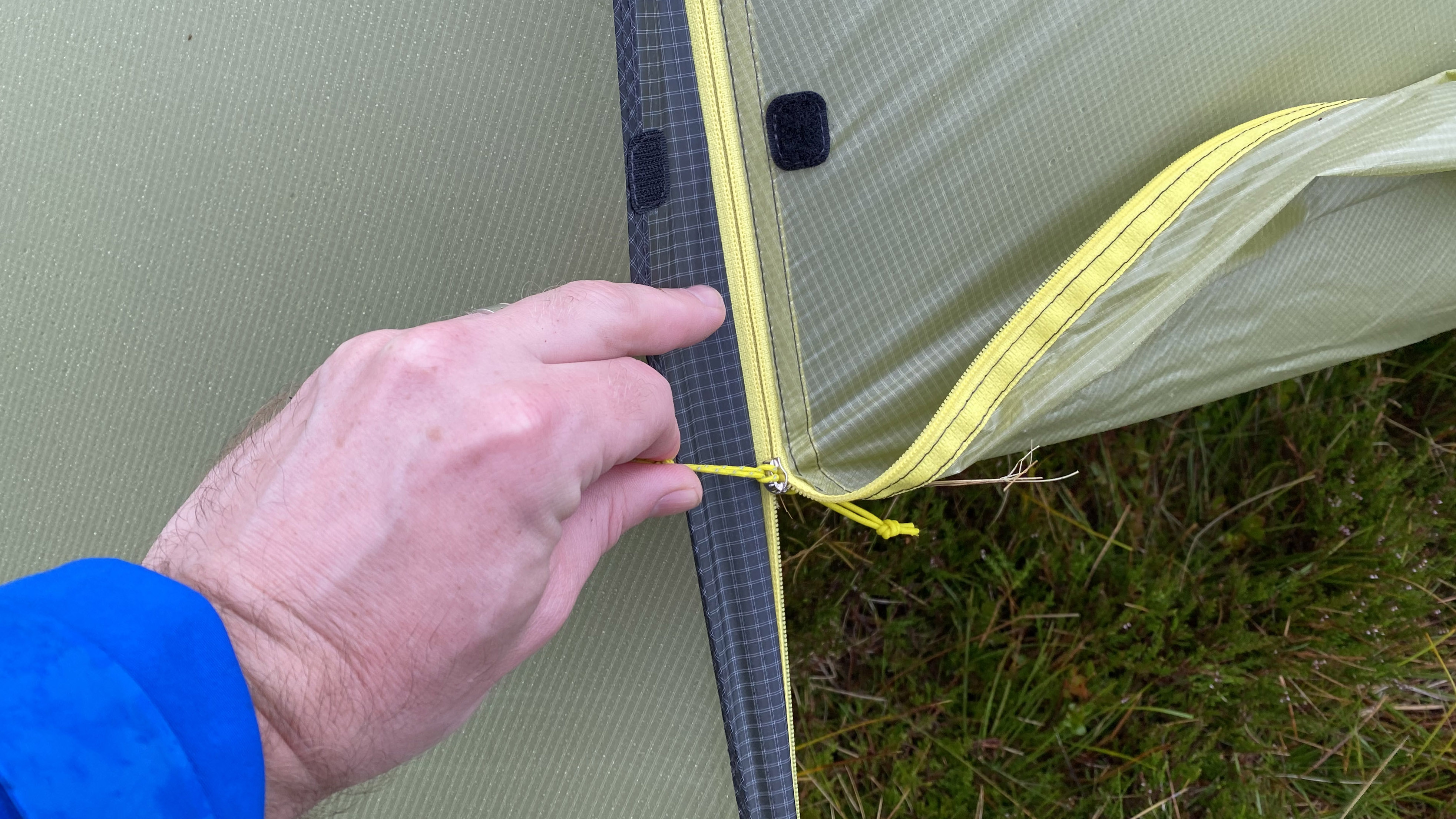
There are two points of access, with large doors on either side. The vestibules provide ample space for dumping wet gear, away from the dry inner sanctum. Once inside, I found the tent to be bright and spacious. The mesh walls let in loads of daylight – it really is a pleasant place to be.
When the sun sets, there’s a nightlight pocket which, when paired with a headlamp, creates a lovely diffuse light for reading and for trail readiness faff. I enjoyed many-a-night with only the swish of the wind on the flysheet, the sounds of distant tumbling streams and a good book for company, perfectly content in my Hornet’s nest. Gear pockets keep hiking tech and other items off the groundsheet.
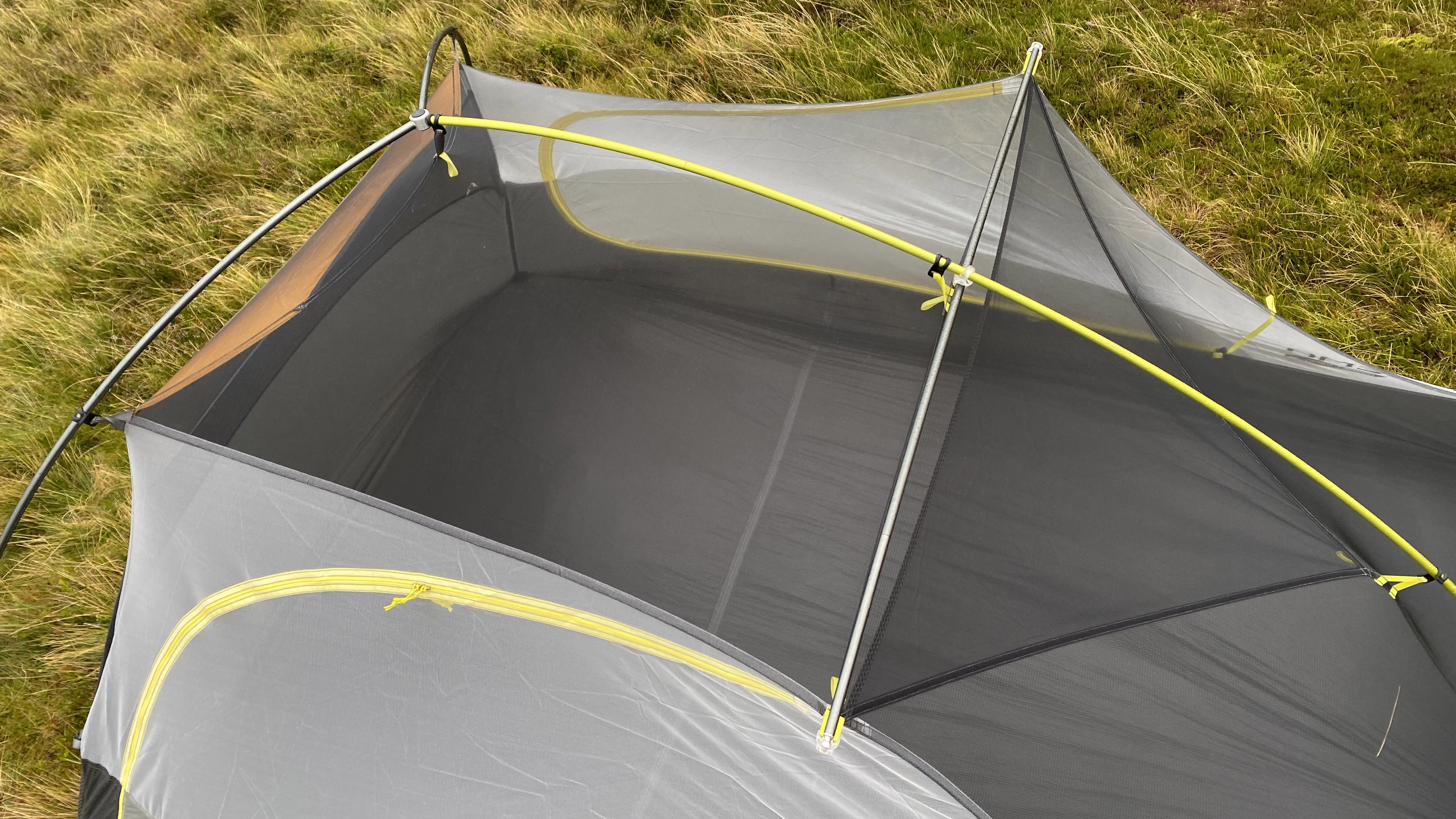
Speaking of which, the groundsheet feels remarkably thin compared to most tents. However, throughout the test period, it kept the damp earth beneath at bay and there were no issues with its durability.
A really cool touch is the inner’s panoramic sunroof-style ceiling. On those magical, warm, clear and dry summer nights, you can enjoy the celestial heavens through the no-see-um mesh. The same mesh is used on the side walls but is white, providing the required level of privacy. The mesh also gives a combination of ventilation and protection from pesky insects, particularly important when camping in Scotland.
The whole thing packs down into a cuboid stuff sack. Nemo have called this a ‘Divvy Cube’, thanks to the way you can split the weight with a pal if one of you carry the fabrics in the sack, while the other takes the bagged-up stakes and poles. The whole thing fits nicely and conveniently in the bottom compartment of a hiking backpack.
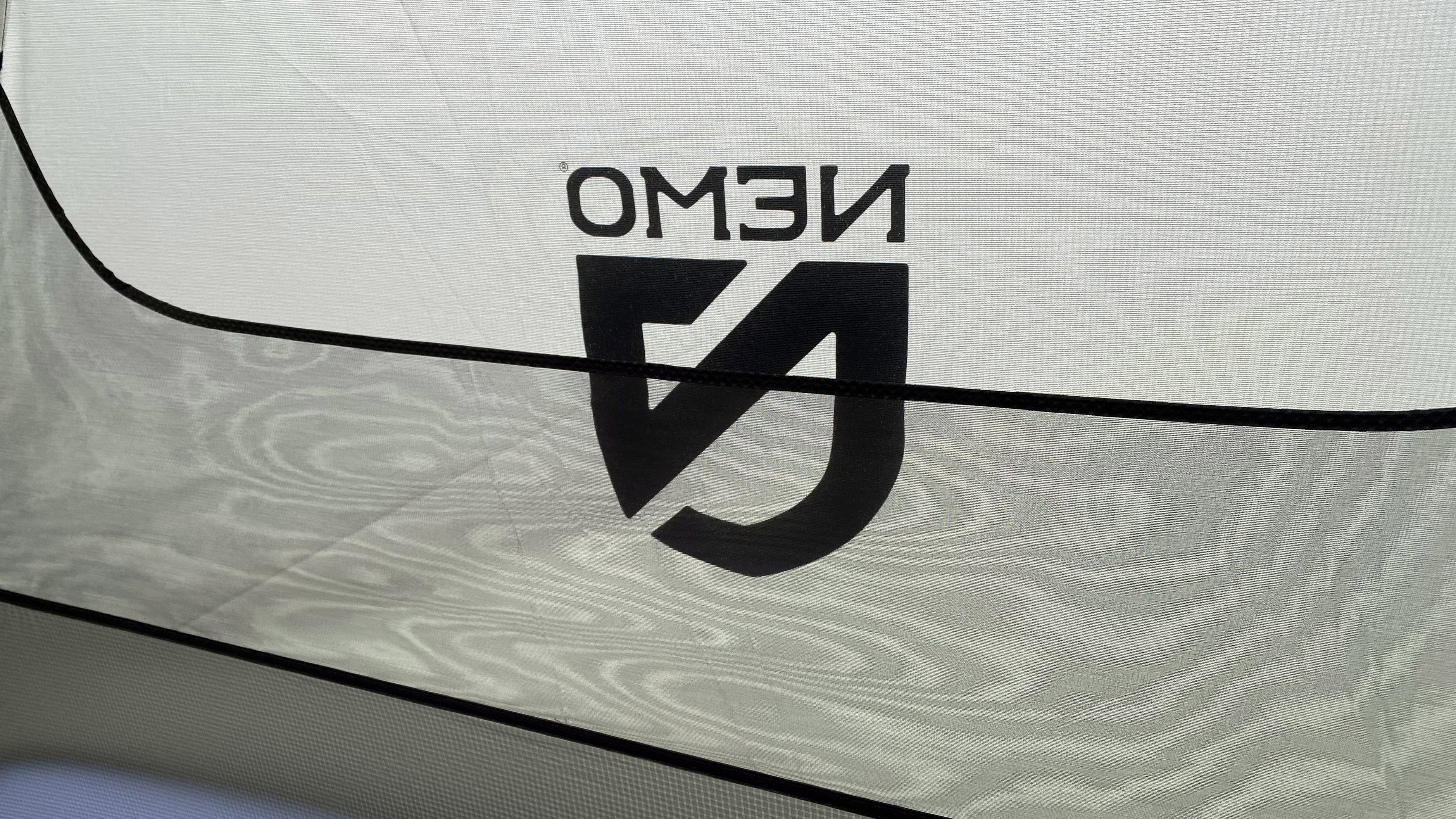
At around $550 (£550) new, it’s not the cheapest tent around. So, will the Hornet end up stinging me? Having had the tent for less than a year, it remains to be seen if the Osmo fabric’s performance remains as strong as this over time. However, so far so good and all of Nemo’s products come with a lifetime guarantee anyway. I’m certainly looking forward to unzipping this tent once more when spring comes back around.
Alex is a freelance adventure writer and mountain leader with an insatiable passion for the mountains. A Cumbrian born and bred, his native English Lake District has a special place in his heart, though he is at least equally happy in North Wales, the Scottish Highlands or the European Alps. Through his hiking, mountaineering, climbing and trail running adventures, Alex aims to inspire others to get outdoors. He's the former President of the London Mountaineering Club, is training to become a winter mountain leader, looking to finally finish bagging all the Wainwright fells of the Lake District and is always keen to head to the 4,000-meter peaks of the Alps. www.alexfoxfield.com
